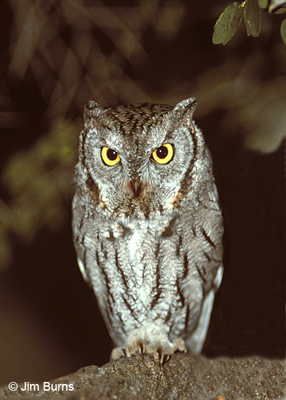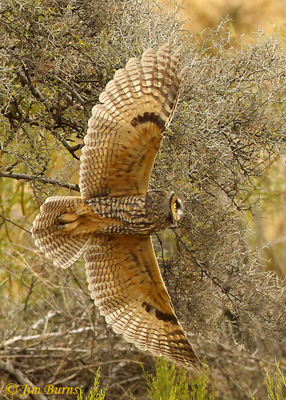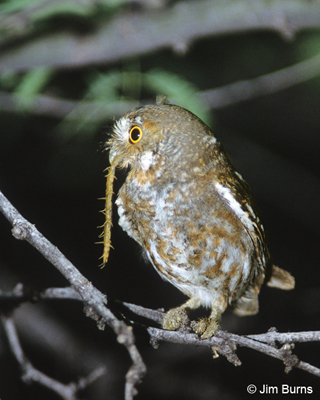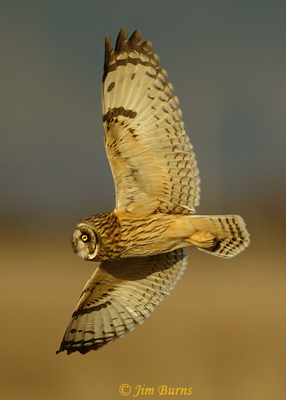Owls have fascinated man since the dawn of recorded history. Originally owls were all about myth and mystery. If you’ve tried to find one lately, you know they still are—dark deserts and shadowed woods, seldom seen when sought, appearing out of nowhere when least expected. Arizona is home to thirteen of North America’s nineteen owl species, and there are rumors of a fourteenth. The accompanying images of Arizona’s owls were all taken in state. Here are the stories, in chronological order, of our first encounters with the members of Arizona’s first family of birds.
Great Horned Owl (our first Arizona owl)—We were driving a national wildlife refuge on a cold, cloudy winter’s morning, stopped and got out to glass big birds flying in the distance, turned to get back into the car and there was the owl sitting there staring at us, impassively, ten feet up in a tree only ten yards away.
Burrowing Owl—Out for a dawn run on an urban greenbelt, I encountered a mentally challenged, homeless man. He stopped me and began hooting and chittering while pointing out into the wash. I smiled at him and continued on. On my way back he was gone but, to my disbelief, at the same spot, a Burrowing Owl was perched in a tree, calling. The man had mimicked its vocals perfectly.
Whiskered Screech-Owl—Hiking a trail in the Santa Ritas early one May morning at an elevation suitable for six of Arizona’s mountain owls, I glassed every hole in every tree. Yeah, it was a slow hike, but it turned out to be the first, and only, time this strategy ever paid off. Coming around a bend I found a storm damaged oak snag six feet off the ground with a Whiskered Screech in it.
Western Screech-Owl—A birding friend living in a natural area outside Phoenix called to tell me she had a Western Screech hanging around her yard. I was there that evening and photographed “her” owl. With blood on its beak! We often forget that owls, due to their unique environmental niche, may be the ultimate avian predator.
Long-eared Owl—Riding mountain bikes one winter through a mesquite wash on the Tonto National Forest with a friend, we flushed a Long-eared, then another, then another. Half a dozen in all, but my buddy, a non-birder, was clueless as to my excitement.
Elf Owl—Stumbling around after dark in the largest Saguaro forest between here and Tucson listening and looking for Elfs, we got twice lucky and watched a male fly in with a centipede for nestlings. It’s still the only centipede I’ve ever seen.
Barn Owl—Truth be told, this is the owl that should wear the “screech” label. Imagine running in the dark on a moonless night and startling a roosting Barn Owl which flushes, sight unseen, while emitting the high, drawn out, blood curdling rasp for which it is famous. I’ve had that adrenaline rush twice in Arizona.
Spotted Owl—Camping in the Pinalenos, we were eating dinner after sundown one evening, owls the furthest thing from our minds, when we accidentally dropped a metal pot on the rocks of our fire circle. Instantly a Spotted owl went off in the Ponderosa directly above, hissing, barking, and cackling, definitely our most skin-crawling encounter ever with owls.
Northern Pygmy-Owl—Our first sighting of Northern Pygmy in Arizona occurred one morning at daybreak in the Chiricahuas. Noticing movement high in a Ponderosa, we put the glasses on a Blue-throated Mountain-gem harassing something—a Northern Pygmy.
Ferriginous Pygmy-Owl—Owls are always an adventure. Our first Arizona Ferruginous flew across a road into a yard in rural Arizona and, as we glassed for a better look, the homeowner emerged from the house with a shotgun and suggested we move along.
Short-eared Owl—Our initial Short-eared, in winter in the San Rafael Valley, proved what the literature says. Crepuscular Short-eareds replace the diurnal Northern Harriers coursing the grasslands around sundown. Two evenings in a row the first Short-eared appeared within minutes after the last harrier.
Northern Saw-whet Owl—The group that had searched for two hours along a creek for a reported Saw-whet began breaking up. Deciding to give it one more try, I bent down to tie my boot, stood up and saw the owl above me deep in the foliage of a Tamarisk we had already glassed several times.
Flammulated Owl (our final Arizona owl)—In an area known for recent bear problems, we walked along a creek through Ponderosa Pine in pitch darkness, trying to pinpoint the soft, notoriously ventriloquial tooting of a Flammy. A large animal splashed through the water and came crashing through the brush in our direction. We ran the fastest quarter mile in the state that spring and fell, panting, into our van. When we calmed down, we discovered the pair of Flammies at a nest hole across the road.
Owling is a journey, not a destination. Owls are a fever trip, not a casual check mark on a list. Oh, and Boreal Owls have been recorded in northern New Mexico. You could try our White Mountains, perhaps Escudilla, in October.
Western Screech-Owl, blood on beak |
Long-eared Owl coming out of mesquite |
Elf Owl with centipede |
Short-eared Owl, coursing grassland |



